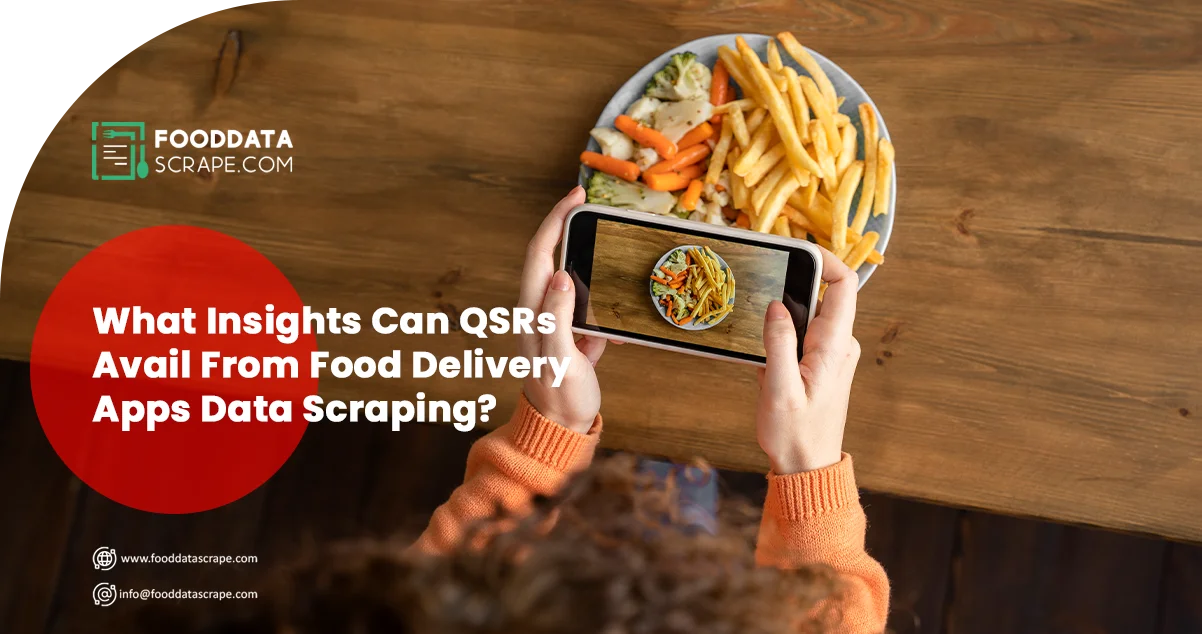The Quick-Service Restaurant market is expected to be worth $7111 billion by 2024. With the surge in competition within the QSR industry, restaurant chains increasingly use food aggregators to broaden their market reach and increase sales.
To achieve more ROI value and increase sales figures, QSRs need access to massive data and insights on principal indicators, which can be obtained by scraping data from food delivery apps.
An essential thing QSRs consider is how visible and competitive they are on crowded food aggregator platforms. Knowing how they perform against their rivals in terms of discoverability helps improve their marketing strategies. In addition, the identification of gaps in product assortment using food aggregator data scraping allows QSRs to match their product ranges with customer tastes, which in turn offers the restaurants a chance to attract more customers.
With access to delivery time frames and competitors' fee structures, QSRs can align logistics and improve customer satisfaction. By using food aggregators' data scraping services for competitors' pricing strategies, QSRs can set prices competitively while optimizing profit margins. Furthermore, data-driven approaches allow for efficient marketing budget allocation on food aggregator platforms and improve marketing ROI, thus enabling maximum revenue generation.
This blog explores the synergistic relationship between the QSRs and the food aggregators, stressing that data-driven insights form the backbone of the QSRs toward revenue scalability and long-term sustainability.
Unlocking Sales Growth: The Power of Data in Online Food Ordering

Data is the most powerful pillar of raising sales, which is especially obvious in online food ordering. As per the data provided by Statista, we can expect the CAGR to be 10. However, from 2021 to 2025, CAGR will be 40% of the online food ordering revenue. For QSRs, working with food delivery apps gives them many benefits, such as a vast customer base, efficient delivery services, and an entry point to the world of quick commerce, increasing their visibility and potential sales.
In addition, using food aggregator platforms to streamline the processes of ordering, tracking, and delivery has faced a challenge in terms of data access. This data is pertinent to optimizing both operations and sales.
Unleashing Sales Potential: Harnessing Data in Online Food Ordering

Data is a decisive factor in the sales in the online food ordering sector. The Outlook of this market is very bright, with the projection of the Compound Annual Growth Rate (CAGR) to be 10. At 40% from 2021 to 2025, platforms like Uber Eats and DoorDash give QSRs a vast customer base and efficient delivery services. Nevertheless, the problem of obtaining essential data still exists. Instantaneous insights into discoverability, selling price, delivery times, and ad performance are significant for efficient operations and sales optimization because the competition is severe.
Data's Role in Sales Boosting: The meaning of data in sales increases is especially clear in the online food ordering industry. The CAGR of 10, the Substantial anticipated growth, is projected. A 40% increase in online food ordering revenue from 2021 to 2025 by Statista using food delivery data scraper, the appearance of food aggregator apps, which include Uber Eats, DoorDash, and GrubHub, has disrupted how consumers access Quick Service Restaurants (QSRs). By working with these platforms, QSRs can reach a broad customer base, use efficient delivery services, and get a quick commerce gateway, which increases their visibility and sales potential.
Enhancing QSR Discoverability: QSRs explore methods to boost their visibility on food aggregator platforms to secure a competitive edge. This visibility directly affects sales by bringing in more orders. Some platforms provide insights into discoverability, but the delayed provision and the absence of competitor data make them less effective. With real-time restaurant and competitor insights, QSRs can adjust their presence to fit in the right place.
Effective Pricing & Promotions Strategy: Correct pricing of QSR menus requires a delicate approach. With competitive pricing policies, clients can be attracted without giving up the possibility of profit. Knowing the competitors' prices allows QSRs to adjust their pricing strategies accurately, which is a balance between competitiveness, high-quality products, and good service.
Optimizing Delivery Time: Prompt delivery of hot meals and providing customers with what they expect is the proper way to nourish customer loyalty. However, food aggregators do not give delivery time data to QSRs, so both QSR companies and their competitors remain incomplete about food delivery. The insight into delivery time enables QSRs to optimize their operations, thus ensuring quick service and competitive delivery estimates.
Delivery Fee Management: Customer sensitivity in delivery fees shows the importance of optimizing these fees. Food aggregators do not provide data about competitors' delivery fees, but QSRs can get valuable insights to polish their pricing strategy, which should remain competitive and profitable.
Analyzing Ad Performance & ROI: Data-driven insights into ad performance are the key to optimizing advertising ROI. The ability to determine the particular types of ads and promotions that get the highest reactions from customers allows QSRs to spend their advertising budgets in the most effective way, maximizing coverage and impact.
Ensuring Outlet Availability: Availability on food aggregator platforms during peak hours is one of the very important conditions for refraining from revenue loss. Regular outlet audits help QSRs deal with technical problems right away and protect sales potential by ensuring uninterrupted service. Using availability data, QSRs can steer their operations effectively and efficiently through revenue opportunities.
Conclusion:
Given how efficiently sales, delivery, discoverability, availability, and customer data can be analyzed and optimized, it provides a credible way for a restaurant to accelerate its revenue growth. However, getting this time-critical data still looks like a formidable task. On the other hand, thanks to QSR Intelligence, this data is becoming more accessible, as mentioned in this blog. Lastly, we offer seven valuable tips for QSRs to stand out on food apps. Through these learnings and strategies, QSRs can achieve a competitive advantage in the food delivery industry, improve their operational setup, and generate significant revenue in the long run.
Are you in need of high-class scraping services? Food Data Scrape should be your first point of call. We are undoubtedly the best in Food Data Aggregator and Mobile Restaurant App Scraping, and we render impeccable data analytics and insights for strategic decision-making. With a legacy of excellence as our backbone, we help companies become data-driven, fueling their development. Please take advantage of our tailored solutions that will add value to your business. Contact us today to unlock the value of your data.
























































































